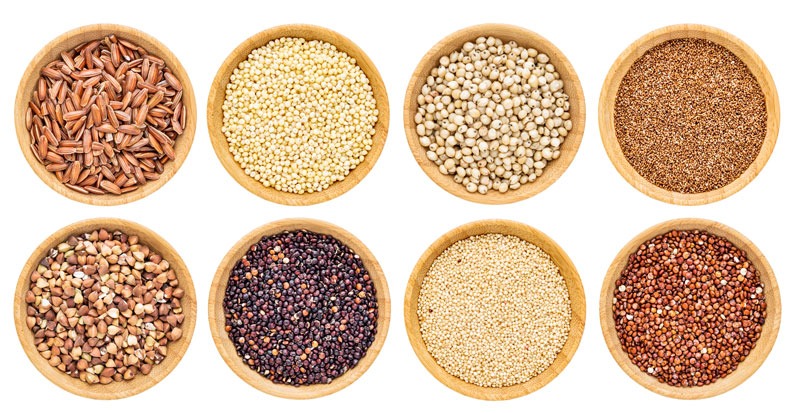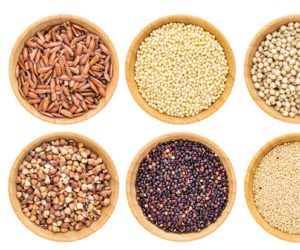Gluten Reducing: Taking control of this protein

Humanity cannot live by bread alone — after all we need beer as well. OK, we’re assuming you want a beer if you’re reading a homebrewing magazine. But not everyone can just crack open a beer for fear of triggering systemic autoimmune reactions that can bring pain and severe harm.
Their enemy is gluten — a complex structure of proteins that is found in wheat, barley, and rye. In other words, all of our favorite brewing grains.
And while certain grains like oats are often viewed as safe for this set of people, the fact is that most small grains are assumed to be contaminated with wheat because wheat is so ubiquitous in North America and can be found growing in most fields. But fear not — it is possible to still make beer for everyone . . . well, let’s just say almost everyone.
Gluten is one of those odd facets of nature that humanity has wrestled into usefulness. When gluten constituents are activated via hydration (sped by the mechanical action of kneading), the resulting mesh gives dough its resiliency and the ability to capture carbon dioxide from fermentation. Simultaneously it gives chewiness and airiness. In beer we don’t activate gluten but its constituent proteins are still carried along through the process.
Putting Gluten Into Context
For roughly 93% of humanity, this is a wonderful, mostly hidden fact of gustatory life. Most people blissfully glide along without needing to understand how bread gets its loft and bounce. The other 7% react to gluten along a scale of sensitivity, with the majority of this group (~6% of humanity) classified as being “gluten-sensitive.” Their reactions, with myriad causes, can range from mild to severe gastrointestinal distress. The remaining group, about 1% of the total population, suffer from celiac disease — an autoimmune disorder with a wide range of effects and symptoms, including progressive damage to the villi of the small intestine and subsequent malabsorption of certain nutrients.
For people with gluten sensitivity, breaking up the gluten proteins into smaller undetectable components may do the trick.
If you don’t have these conditions, studies indicate that going gluten-free or gluten-reduced won’t impact your health. Beware the wellness business that tries to sell you on the evils of a compound you’re not allergic to. Regardless, we’re beer people and even if we don’t have issues, we want to be great hosts and have our beers approachable for our gluten-adverse friends.
Two terms to know:
Gluten-Reduced — brew with common brewing grains (or a mix of grains) and then use proteolytic enzymes to break down the offending proteins.
Gluten-Free — brew using no gluten-containing grains. Per the FDA (Food and Drug Administration), there must be less than 20 ppm gluten to be gluten-free.
They have two very different impacts. Gluten reduction is fairly easy to implement in the brewery. For people with gluten sensitivity and some celiac suffers, breaking up the gluten proteins into smaller undetectable components may do the trick. The enzymatic action, if it reduces the detectable gluten below 20 ppm, can render the brew safe to consume. It just has the same side effects as it does for the unaffected drinker. For a majority of people with gluten sensitivity, this step may return beer to the tier of an everyday pleasure.
However, some celiac sufferers probably get no such reprieve in their enjoyment of beer as the autoimmune disorder still sounds battle stations and goes wildly on the attack, damaging the drinker’s body. Yes, even with the disrupted strands of proteins. Their quaffing options get quickly winnowed to wine, cider, and beers made with substances that don’t carry the offending gluten (e.g. millet, sorghum, rice, corn, buckwheat, etc.).
The world of gluten-free brewing requires additional steps to convert and create beer along with an eagle eye and stringent care to prevent cross-contamination. The amount of gluten needed to trigger some drinker’s immune response is miniscule — the gluten in a yeast slurry grown in gluten-rich media is many times more than needed, even diluted across a batch.
In other words, if someone tells you they are a celiac sufferer, take it pretty seriously and we’ll recommend opening a nice bottle of wine, mead, cider, or sake.
For more information about truly gluten-free brewing, listen to Episode 38 of Experimental Brewing for our interview with James Neumeister of Portland’s Ground Breaker Brewing and Episode 84 of the Brew Files with Brian Newcomb for looks at gluten-free homebrewing. Also the May-June 2019 issue of BYO contains an article “Hold the Gluten” with an in-depth look at going gluten-free. Digital members can read the story online at https://byo.com/article/hold-the-gluten/. Be warned — it’s a world of new ingredients and new techniques and we know that homebrewers just hate learning something new!
Gluten-Reduced Beers
In the world of gluten-reduced brewing, we suggest tackling the problem on two fronts. If you have a taste for beer but you need a lower gluten threshold — you can start by lowering the potential gluten in the batch. Why? Aren’t we just going to use a feat of enzymatic magic to render our protein problem null and void? Yes, but at the same time going right to the source and starting with lower amounts of gluten in the beer helps ensure that you’ll be in better stead at the end of the brew process.
Start by looking at your grain bill. And here’s your chance to play around with an endless variety of different grains like sorghum, millet, buckwheat (technically not a cereal, but still), quinoa, etc. If you’re trying for gluten reduction instead of elimination, many of these cereals can end up in the mash tun. Search for their gelatinization temperatures to ensure conversion or just run a cereal mash or cook the grains first.

Secondly, you can incorporate no-gluten ingredients in your beer to reduce the overall level. You don’t even need to reach that far out of your brewer’s cupboard to do so. Flaked corn/maize and flaked rice are, barring cross contamination, gluten-free. Sugar? Absolutely — also welcome in the gluten-reduced brew kettle.
Finally we can take a look at most modern Pilsner and pale ale malts, particularly from your larger maltsers, which are lower in total protein than older heritage malts. A lower protein load is helpful in making clearer beer. By choosing lower-protein malt you not only reduce haze but also reduce the amount of potentially offending protein in the final beer.
Don’t think you’re restricted to just making endless light lagers and cream ales — there are plenty of styles where you can and traditionally might see some adjunct additions. For instance, corn has been found historically as a convenient, inexpensive sugar source in a number of British styles . . . think something like a mild ale.
Next, let’s tackle this problem with biology! Remember that gluten is a complex of different proteins. We mentioned that maltsters were attempting to reduce protein in malt over time largely for reasons of clarity and stability. Less protein, less harsh flavors, less haze . . . more stable beer! And just like how brewers are turning to innovative solutions to boost hop characters without hops, brewers can turn to microbiological ways of reducing protein.
The easy homebrew solution is a proteolytic enzyme sold in 10 mL vials by White Labs called Clarity Ferm. The enzyme is actually produced by the company DSM and called Brewers Clarex, but White Labs has made it available to the homebrew market. It’s widely available and convenient to use. Simply add one vial per 5-gallon (19-L) batch at the same time you pitch yeast. Sit back and let the enzyme and yeast work its magic.
While the yeast are busy mass consuming the sugar, the enzyme found in Clarity Ferm is attaching to and cleaving proteins, including the glutenin and gliadin that trigger the autoimmune response. The actual reason for development of this product was to prevent the binding of proteins and polyphenols that would form a chill haze. The reduction in measurable gluten levels in beer was an unanticipated bonus effect!
One last caution — enzymes may seem like the magic bullet to solving gluten issues, but take care. First, you’ll want to do as much as possible to prevent additional sources of gluten from getting into your finished beer. Treat the keg like you would a sour keg — new plastics, dedicated draft lines, etc. Precautions should be taken to clean your grain mill and rollers too.
So to summarize the ways to make a gluten-reduced beer that may be safe for the gluten intolerant:
Reduce the overall protein level in the beer by choosing lower protein malts, sugars, and other brewing adjuncts.
Add a cold-acting proteolytic enzyme like Clarity Ferm at the same time as pitching yeast.
Keep everything clean of gluten post-fermentation.
Take It Slow
Now that you have packaged beer — it’s time to get drinking, right? Eh, be safe there! First, have your tester start with a small sample of your gluten-reduced beer. Since gluten reduction doesn’t work for all gluten-intolerant folks, you’ll want to make sure that the small sample doesn’t impact them beyond the pleasure of a good tasting beer. After they give the thumbs up then you’re ready for a proper glass of beer.
If you want a trusted scientific measure, White Labs does offer an analysis service to test a sample of your beer. They will run a mailed sample via approved protocols to determine the gluten level in your beer. Again, keep in mind that some celiac sufferers react to beers that are enzymatically gluten-reduced.
Thankfully, with some care and consideration, gluten-reduced brewing isn’t hard to pull off and because the apparent sensory effect seems restricted to clarity — and in this case, improving the clarity — there’s no reason, besides cost, that you can’t treat all your beers for the folks in your life that would love a beer without the pain incurred by this protein.



